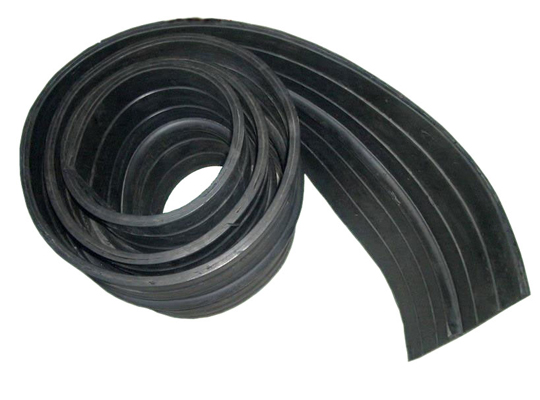
Waterproofing joints
Waterproofing joints is an essential step in protecting concrete structures from water damage. Whether you're working on a residential project or a large-scale construction site, ensuring that your concrete joints are properly waterproofed can make a significant difference in the longevity and durability of the structure. In this guide, we'll take you through the step-by-step process of waterproofing joints to prevent water damage.
Water damage prevention
Water damage can wreak havoc on concrete joints, leading to cracks, leaks, and deterioration. By following these steps, you can effectively prevent water damage and ensure the longevity of your concrete structures.
Step 1: Identify the joints
The first step in waterproofing your concrete joints is to identify the areas that require attention. Joints are typically vulnerable to water damage as they are prone to expansion and contraction. Common areas where joints exist include the corners of buildings, bridge decks, and expansion joints.
Step 2: Clean the joints
Before applying any waterproofing material, it is crucial to clean the joints thoroughly. Remove any dirt, debris, or loose particles from the joint surface using a wire brush or a high-pressure water jet. Ensure that the joints are dry before proceeding to the next step.
Step 3: Choose the right waterproofing material
Choosing the appropriate waterproofing material is vital to ensure effective protection against water damage. There are various options available, including liquid-based waterproofing compounds, waterproofing membranes, and hydrophobic sealants. Consider factors such as the type of joint, expected movement, and exposure to environmental elements when selecting the best material for your project.
PVC Water Stoppers strips can do sealing job effectively. They also safeguard structure from cracks arising from expansion-contraction movements.
Step 4: Apply the waterproofing material
Once you have selected the suitable waterproofing material, follow the manufacturer's instructions for application. It is essential to apply the material generously to ensure proper coverage and protection. Use a brush or a roller to apply the material evenly along the joint surface.
Step 5: Allow for curing time
After applying the waterproofing material, it is crucial to allow sufficient time for curing. Curing time can vary depending on the type of material used, temperature, and humidity levels. Refer to the manufacturer's instructions to determine the appropriate curing time. Avoid any traffic or contact with the joints during this period to ensure the effectiveness of the waterproofing material.
Step 6: Inspect for any gaps or missed spots
Once the material has cured, inspect the joints thoroughly for any gaps or missed spots. It is essential to address any areas that may have been overlooked during the initial application. Apply an additional layer of the waterproofing material to fill any gaps or touch up any missed spots.
Concrete waterproofing
Concrete waterproofing involves taking proactive measures to prevent water from penetrating the concrete surface. While the focus of this guide is on waterproofing joints specifically, it is essential to consider additional steps for overall concrete waterproofing.
Step 1: Surface preparation
Proper surface preparation is crucial in ensuring effective concrete waterproofing. Begin by cleaning the surface to remove any dirt, grease, or loose particles. Use a pressure washer or a stiff bristle brush to scrub the surface thoroughly. Once cleaned, allow the surface to dry completely before applying any waterproofing material.
Step 2: Cracks and voids filling
Before proceeding with the actual waterproofing, it is essential to address any cracks or voids in the concrete surface. Small cracks can be filled using a suitable concrete crack filler or sealant. For larger cracks or significant structural issues, consider consulting a professional to ensure proper repairs are done.
Step 3: Select the right waterproofing product
Choosing the appropriate waterproofing product for your concrete is crucial for long-lasting protection. Options include concrete waterproofing paints, coatings, and sealants. Consider factors such as the level of water resistance required and the environmental conditions the concrete will be exposed to.
Step 4: Apply the waterproofing material
Follow the manufacturer's instructions for the application of the chosen waterproofing material. It is important to apply the material evenly and generously to ensure thorough coverage. Use a brush, roller, or sprayer, depending on the product and the size of the surface area to be waterproofed.
Step 5: Allow for curing time
Similar to the waterproofing of joints, allowing sufficient time for curing is critical for concrete waterproofing as well. The curing time will depend on the type of product used, temperature, and humidity levels. Refer to the manufacturer's instructions for the recommended curing time.
Step 6: Perform regular maintenance
Even with effective waterproofing measures in place, regular maintenance is essential to prolong the lifespan of your concrete structures. Inspect the joints and concrete surface periodically for signs of damage, cracks, or water leakage. Address any issues promptly by applying additional waterproofing material or seeking professional assistance if required.
Conclusion
Water damage can be a significant concern when it comes to concrete structures, but by following the step-by-step guide to waterproofing joints and implementing proactive measures for concrete waterproofing, you can effectively protect your structures from water damage. Remember to choose the appropriate waterproofing materials, ensure proper surface preparation, and allow sufficient curing time. By investing time and effort into waterproofing, you can enjoy the longevity and durability of your concrete structures for years to come.























